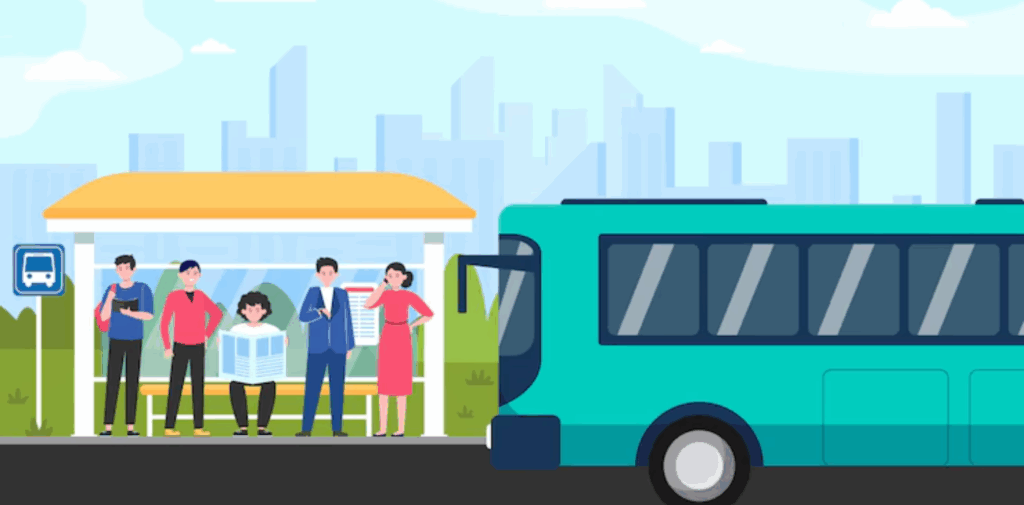Long commutes have become a part of daily life for millions of people living in large, bustling cities like Mumbai and Bangalore. With growing populations, increasing traffic, and limited public transport options, getting from home to work (and vice versa) often involves hours spent stuck in traffic, navigating crowded buses, or squeezing into packed metro trains. These long commutes can be exhausting, frustrating, and even harmful to one’s physical and mental health. However, with a few simple strategies and some thoughtful planning, it’s possible to survive and even make the most of these daily journeys. In this article, we’ll explore practical ways to make your long commute more bearable and productive.
1. Plan Your Commute Strategically
The first step in surviving a long commute is to plan your journey effectively. If possible, try to leave early or later than peak rush hours. Traffic in cities like Mumbai and Bangalore is especially heavy during the morning and evening rush hours, so adjusting your schedule by even an hour can make a huge difference. For instance, if you can leave at 7:30 AM instead of 8:30 AM, you’ll avoid the worst of the traffic and reach your workplace more quickly.
For those using public transport, knowing the best routes and times can save you a lot of time. Research the different options available, including buses, trains, and metros, and see if there’s a combination of these that might reduce your commute time. Sometimes, taking a slightly longer route on a less crowded train can be more efficient than cramming into a bus or a busy metro. Apps like Google Maps, Ola, or Uber can provide real-time traffic updates, which will help you choose the fastest route at any given time.

2. Turn Your Commute into a Productive Time
One of the biggest challenges of long commutes is the wasted time. Instead of dreading the hours spent stuck in traffic or on a crowded train, why not turn that time into something productive? If you are driving, it may be difficult to do much other than focus on the road, but for those who are using public transport, there are plenty of opportunities to make the most of that time.
You can use the time to read, catch up on the news, or listen to podcasts. There are numerous podcasts available on a variety of subjects, from self-improvement to technology to personal finance, that can be both entertaining and educational. Audiobooks are another excellent option, allowing you to dive into new books without having to sit down with a physical copy. Many people also use their commute time to plan their day, reflect on personal goals, or learn a new skill. Apps like Duolingo can help you learn a new language, while apps like Skillshare or Udemy offer short courses that can be consumed during your daily commute.
If you’re not keen on productivity during your commute, you can also focus on relaxation. Deep breathing exercises, meditation, or simply zoning out with music can help you recharge and reduce the stress associated with long hours spent traveling.
3. Stay Comfortable and Healthy
Long commutes can take a toll on your body, especially when sitting in cramped spaces for long periods. It’s important to make sure you’re comfortable and that your body is taken care of during the journey. If you’re driving, make sure your car is well-maintained and your seat is adjusted for maximum comfort. Having a good seat cushion can make a significant difference, as can adjusting the backrest and steering wheel to suit your posture.
For those using public transport, the challenge is often the overcrowding. To minimize discomfort, consider carrying a neck pillow or a portable cushion, especially if you’re traveling for long hours. Additionally, try to wear comfortable clothes and shoes that allow you to move easily.
Staying healthy during long commutes is equally important. Dehydration and hunger can affect your mood and energy levels, so carry a water bottle and some healthy snacks with you. Snacks like fruits, nuts, and protein bars are perfect for keeping you energized without making you feel sluggish. Avoid heavy, greasy foods that can make you feel tired or uncomfortable during the journey.
Another simple but effective tip is to take small breaks during your commute. For example, if you’re driving, take a few minutes to stretch your legs or walk around during stops. If you’re traveling by train or bus, get off at a few stops earlier and walk the remaining distance to your destination. This not only improves circulation but also helps break up the monotony of the journey.

4. Make the Most of Public Transport and Carpooling
While driving your own car may seem like the most convenient option, it can be both expensive and exhausting due to the heavy traffic and parking woes. Instead, consider using public transport or carpooling to make your commute more manageable.
Bangalore and Mumbai have well-developed metro systems, and both cities have multiple bus routes that can take you to your destination. These modes of transport are often faster and more predictable than driving, especially during rush hours. If you’re traveling by metro or bus, try to get to the station a bit earlier to secure a comfortable seat or standing space.
Carpooling is another option to consider. Many companies and online platforms now offer carpooling services, where you can share a ride with people who are headed in the same direction. This not only reduces your travel costs but also helps reduce the number of vehicles on the road, contributing to a cleaner environment. Plus, carpooling with colleagues or neighbors provides an opportunity to socialize, reducing the isolation that can come from commuting alone.
5. Invest in Time-Saving Technology and Apps
In today’s digital age, there are numerous apps and tools that can help you manage your commute more effectively. For instance, navigation apps like Google Maps or Waze provide real-time traffic updates, allowing you to avoid congested routes and find quicker alternatives. If you’re using public transport, apps like Moovit and Ridlr can help you track buses, trains, and metro schedules, so you can plan your journey better and avoid unnecessary delays.
If you’re driving, consider using apps like Park+ to find available parking spaces near your destination in advance, saving you time searching for a spot. For those relying on cabs or auto-rickshaws, booking apps like Ola, Uber, or Rapido can help you avoid the hassle of haggling for prices or searching for a ride on the spot.
Moreover, these apps can give you access to ride-sharing options, helping you share your ride with others, thus saving money and reducing traffic congestion.

6. Develop a Positive Mindset and Be Patient
Perhaps one of the most important aspects of surviving long commutes is developing a positive mindset. Long hours spent in traffic or crowded public transport can be draining, but instead of focusing on the negatives, try to embrace the journey. Listening to soothing music, enjoying an interesting podcast, or simply zoning out with your favorite playlist can make the experience more pleasant.
Patience is key in a city like Mumbai or Bangalore, where the sheer volume of people and vehicles means that delays are inevitable. Rather than stressing out about the situation, learn to accept it as a part of life. Treat your commute as an opportunity to unwind, reflect, or simply take a break from the rush of daily life.
Conclusion
Long commutes are a reality for many people living in large cities like Mumbai and Bangalore, but they don’t have to be a source of stress and frustration. By planning your commute strategically, making use of technology, and finding ways to make the most of your time, you can turn your daily journey into a more productive and less tiring experience. Remember to prioritize your comfort, stay healthy, and maintain a positive mindset. With these strategies, you can survive and even thrive during your long commutes, making them just another part of your day that helps you grow, relax, and stay connected.




